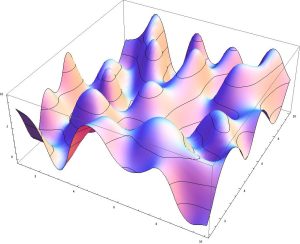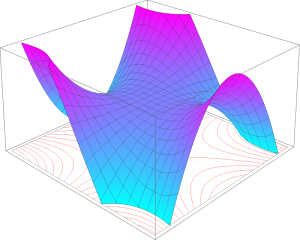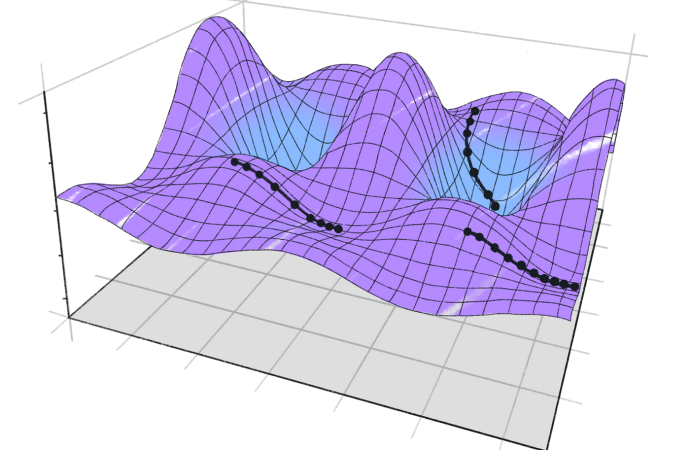The universe, as we perceive it, is a vast and intricate tapestry of particles and forces interacting in complex ways. At the heart of this complexity lies the enigmatic realm of quantum mechanics, where particles behave in ways that defy our everyday intuition. However, delving even deeper into the fabric of reality, we encounter the
The universe, as we perceive it, is a vast and intricate tapestry of particles and forces interacting in complex ways. At the heart of this complexity lies the enigmatic realm of quantum mechanics, where particles behave in ways that defy our everyday intuition. However, delving even deeper into the fabric of reality, we encounter the fascinating domain of quantum field theory, which provides profound insights into the fundamental nature of the universe.
Introduction to Quantum Universe
In the realm of the quantum universe, conventional notions of reality often give way to bizarre phenomena such as superposition, entanglement, and uncertainty. Quantum field theory serves as the mathematical framework that underpins our understanding of these phenomena, offering a deeper perspective on the behavior of particles and fields at the smallest scales.
Basics of Quantum Field Theory
Understanding Quantum Fields
At the heart of quantum field theory lies the concept of fields, which pervade all of space and time, defining the properties of particles and mediating interactions between them. These fields are not static entities but dynamic fields that fluctuate and interact with each other, giving rise to the rich tapestry of particle physics.
Fundamental Forces and Quantum Fields
In the framework of quantum field theory, the fundamental forces of nature electromagnetism, the weak force, the strong force, and gravity are described in terms of distinct fields and particles. By unifying these forces within the framework of quantum field theory, physicists aim to uncover the underlying unity of the universe.
Quantum Mechanics vs. Quantum Field Theory
While quantum mechanics provides a powerful description of individual particles and their behavior, quantum field theory extends this framework to encompass fields and their interactions. Whereas quantum mechanics treats particles as discrete entities, quantum field theory treats them as excitations of underlying fields, leading to a more comprehensive understanding of particle physics.
Quantum Field Theory and Particle Physics

Image by : Yandex
Subatomic Particles and Quantum Fields
In the realm of particle physics, quantum field theory provides a unified description of the myriad subatomic particles that populate the universe. These particles are viewed as excitations of quantum fields, with each particle corresponding to a specific mode of vibration within its respective field.
Standard Model of Particle Physics
The Standard Model of particle physics, which encapsulates our current understanding of the fundamental particles and forces, is grounded in the principles of quantum field theory. By incorporating the electromagnetic, weak, and strong forces within a single theoretical framework, the Standard Model has successfully predicted and explained a wide range of experimental phenomena.
Symmetries in Quantum Field Theory
Symmetry Breaking
Symmetry plays a central role in quantum field theory, with certain symmetries giving rise to fundamental conservation laws and particle properties. However, symmetries can also be spontaneously broken, leading to the emergence of new phenomena and the generation of particle masses.
Gauge Symmetry
Gauge symmetry lies at the heart of many quantum field theories, providing a mathematical framework for describing the interactions between fields and particles. By introducing gauge symmetries, physicists can account for the behavior of particles under different transformations, leading to a deeper understanding of fundamental forces.
Quantum Field Theory and Cosmology
Inflationary Universe
In cosmology, quantum field theory plays a crucial role in our understanding of the early universe, particularly during the inflationary epoch. Quantum fluctuations in the inflaton field are believed to have seeded the density perturbations that gave rise to the large-scale structure of the cosmos.
Quantum fluctuations in the early universe left an indelible imprint on the cosmic microwave background radiation, providing valuable insights into the universe’s early history. By studying the statistical properties of these fluctuations, cosmologists can test theoretical predictions and constrain models of the universe’s evolution.
Quantum Gravity and Field Theory

Image by : Yandex
Challenges of Unifying Gravity with Quantum Field Theory
One of the foremost challenges in theoretical physics is the quest to reconcile gravity with the principles of quantum mechanics. Despite decades of research, a complete theory of quantum gravity remains elusive, posing profound questions about the nature of spacetime and the fabric of reality.
String Theory and Quantum Gravity
String theory represents one of the most promising approaches to quantum gravity, positing that fundamental particles are not point-like objects but rather one-dimensional strings vibrating in higher-dimensional space. By incorporating gravity within the framework of string theory, physicists hope to resolve the conceptual challenges of quantum gravity.
Applications of Quantum Field Theory
Quantum Field Theory in Condensed Matter Physics
In condensed matter physics, quantum field theory provides a powerful framework for understanding the collective behavior of particles in complex materials. By treating particles as excitations of quantum fields, physicists can elucidate phenomena such as superconductivity, magnetism, and phase transitions.
Quantum Field Theory in High-Energy Physics Experiments
High-energy physics experiments, such as those conducted at particle accelerators like the Large Hadron Collider, rely on quantum field theory to interpret and analyze experimental data. By applying techniques from quantum field theory, physicists can probe the fundamental interactions between particles and uncover new phenomena beyond the reach of classical physics.
Quantum Field Theory and Technology
Quantum field theory lies at the heart of quantum computing, which promises to revolutionize information processing by harnessing the principles of quantum mechanics. By encoding information in quantum states and manipulating quantum fields, quantum computers have the potential to solve complex problems exponentially faster than classical computers.
Quantum Field Theory in Material Science
In material science, quantum field theory provides valuable insights into the behavior of electrons and other particles in solid-state systems. By treating materials as collections of interacting quantum fields, physicists can predict and engineer novel materials with tailored properties for applications ranging from electronics to renewable energy.
The Future of Quantum Field Theory
Quantum Field Theory and Beyond
As we peer into the future, quantum field theory continues to inspire new avenues of research and exploration. From the quest for a unified theory of quantum gravity to the development of novel technologies, the insights gleaned from quantum field theory are poised to shape the course of physics in the decades to come.
Implications for Future Research
The profound implications of quantum field theory extend far beyond the realm of fundamental physics, with potential applications in fields as diverse as materials science, computer science, and cosmology. By pushing the boundaries of our understanding, future research in quantum field theory holds the promise of unlocking new frontiers in science and technology.
Conclusion
In conclusion, the study of the quantum universe through the lens of field theory offers a captivating journey into the deepest mysteries of reality. From the microscopic realm of particle physics to the cosmic expanse of the universe, quantum field theory provides a unified framework for exploring the fundamental nature of existence.
FAQs
What is quantum field theory?
Quantum field theory is a theoretical framework that combines the principles of quantum mechanics with those of special relativity to describe the behavior of particles and fields at the smallest scales.
How does quantum field theory differ from quantum mechanics?
While quantum mechanics focuses on the behavior of individual particles, quantum field theory extends this framework to encompass fields and their interactions, providing a more comprehensive description of the quantum universe.
What are the practical applications of quantum field theory?
Quantum field theory has applications in diverse fields such as particle physics, condensed matter physics, and quantum computing, driving advances in technology and our understanding of the natural world.
What are the challenges of unifying gravity with quantum field theory?
One of the main challenges is reconciling the principles of general relativity, which describe gravity as a curvature of spacetime, with those of quantum mechanics, which govern the behavior of particles and fields at the smallest scales.
What is the significance of symmetry in quantum field theory?
Symmetry plays a fundamental role in quantum field theory, giving rise to conservation laws, particle properties, and the behavior of fundamental forces. Understanding symmetry breaking and gauge symmetries is crucial for elucidating the dynamics of the quantum universe.
















